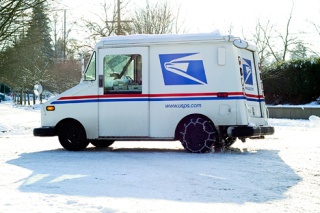As my spine begged for mercy after another day recently spent shoveling snow, I asked myself a simple question you may have asked, too. If the climate is changing, why do I need a snow shovel to dig out my drive way? The answer may surprise you.
History shows we’ve earned our tire chains when it comes to snow. A 1916 winter blast crushed a cathedral dome in Seattle. A 1950 blizzard brought the only “zero degree” reading ever at SeaTac Airport. More than five feet of snow fell in the winter of 1969. Cold weather records from the 1990 Arctic Express still stand, and December 1996 brought heavy snow — twice. Seems our latest “unforgettable” snow is destined to quickly melt in our memories.
I asked Cliff Mass, University of Washington professor and author of “The Weather of the Pacific Northwest,” and Ted Buehner, warning coordination meteorologist for the National Weather Service, for some expert opinions on snow and climate change. Says Prof. Mass: “Global warming is just that — global. You can’t make assumptions about a worldwide trend based on one event happening in one region.” He notes we see big swings in the weather year-round. A good example is the Pineapple Express that washed away all that snow so quickly.
Climate scientists say the Arctic is the first region of our planet to be affected by global warming, with the continents coming second and oceans third. With the Pacific Ocean being our major source of weather, the professor says climate change will be felt here more slowly than in the Arctic, which is seeing the impact now. Buehner, of the NWS, notes that while we shivered in December, people in Barrow, Alaska (Zip Code: Arctic Circle), saw temperatures zoom as much as 35 degrees above average. Not hard to find global warming believers there, I’d guess.
While Western Washington may not be the first place the climate is changing, it is one of the first places where the energy industry is changing. Good thing, too, because on our coldest days, PSE set new records by delivering nearly twice as much natural gas and electricity to local homes and businesses than we typically average. As demand for energy is growing, so are the ways we can produce it cleanly. Wind power is working so well that while the snow was falling, PSE announced a new partnership to build more wind energy facilities in southeast Washington, near the towns of Dayton and Pomeroy. These new wind projects, and the expansion of wind facilities already in operation, have the potential to generate enough electricity to one day power several hundred thousand homes and to create new, green jobs.
To learn more about what’s happening in wind power, and how to save energy all winter long, go to PSE.com or drop me a line at AskAndy@PSE.com. We have plenty of winter left in 2009, so hang on to that snow shovel. Waiting for global warming to clear your driveway may sound tempting, but probably won’t get you to work on time.
Andy Wappler is a senior public relations manager at Puget Sound Energy. He joined PSE in February 2008 after being chief meteorologist at KIRO-TV. He looks forward to hearing from you at AskAndy@PSE.com


